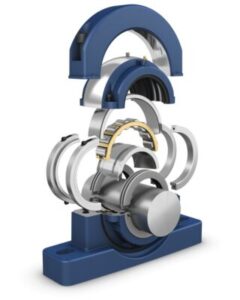Produk Lainnya

Anchor Refractory Castable
Dalam rangka memenuhi kebutuhan pelanggan, Catroller yang sudah lama menggeluti dunia industri manufaktur conveyor memutuskan untuk mengembangkan sayapnya ke produksi refractory anchor. Catroller secara resmi meluncurkan produk premium refractory anchor dengan merek ARC di tahun 2008.
Berbekal pengalaman lebih dari 25 tahun, Catroller berkomitmen menghasilkan refractory anchor terbaik yang siap digunakan oleh berbagai sektor industri. Refractory anchor diproduksi melalui tahap die-stamping, wire-forming, welding, roll-threading, dan tersedia dalam berbagai bentuk seperti Double Y Anchor, UCL Type Anchor, V Wave Anchor, Anchor Y Type.
Catroller mempersembahan refractory anchor dengan berbagai fitur dan manfaat yang dapat membantu Anda menghemat banyak biaya dan energi.

Cooper Split Bearing by SKF
The mining, mineral processing and cement industries put machinery under demanding operating conditions. Extreme temperatures, heavy loads, and contamination pose serious challenges for rotating equipment and their bearings. The fact that these bearings often are difficult to reach when they need replacing, means costly downtime – and great safety risks for the workers involved.
In mining and cement plants, the conveyor is by far the most troublesome asset type. One problem is grease consumption; conveyors typically use standard open pulley bearings which require large amounts of grease to purge contamination. What’s worse, open bearings have a relatively short service life, and therefore normally don’t last as long as the pulley lagging itself. And of course, premature bearing failure means frequent need of repair and replacement. And here’s the worst part: bearing replacement in conveyors is time-consuming and costly in terms of lost production. Since bearings are often situated in places that are hard to reach, it can take up to 24 hours to replace them. In short: fighting contamination, reducing lubricant consumption and speeding up repair times are crucial challenges for the mining, mineral processing and cement industries.
An equally important objective in these industries is to reduce the number of workplace accidents. The major portion of casualties occur during maintenance and repairs. Industry studies have found that 43% of all accidents and 24% of all fatalities occur while maintenance is done on conveyors – partly because couplings and gearboxes need to be hoisted during repair, which entails certain risks. Cutting down maintenance needs is therefore a good way to reduce accidents.






